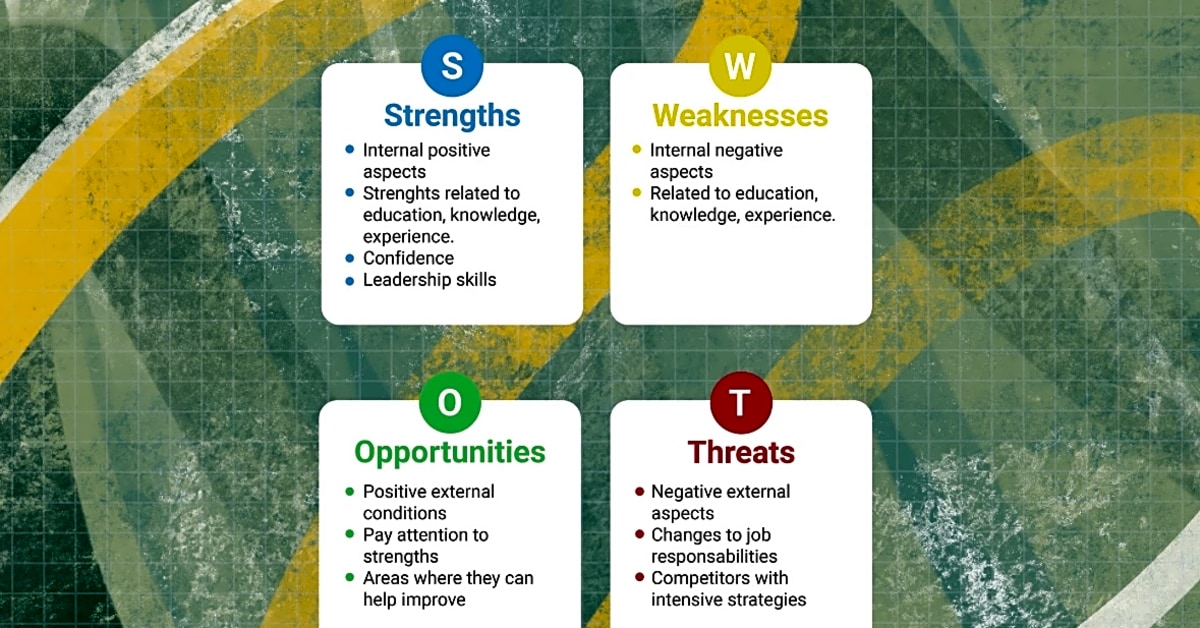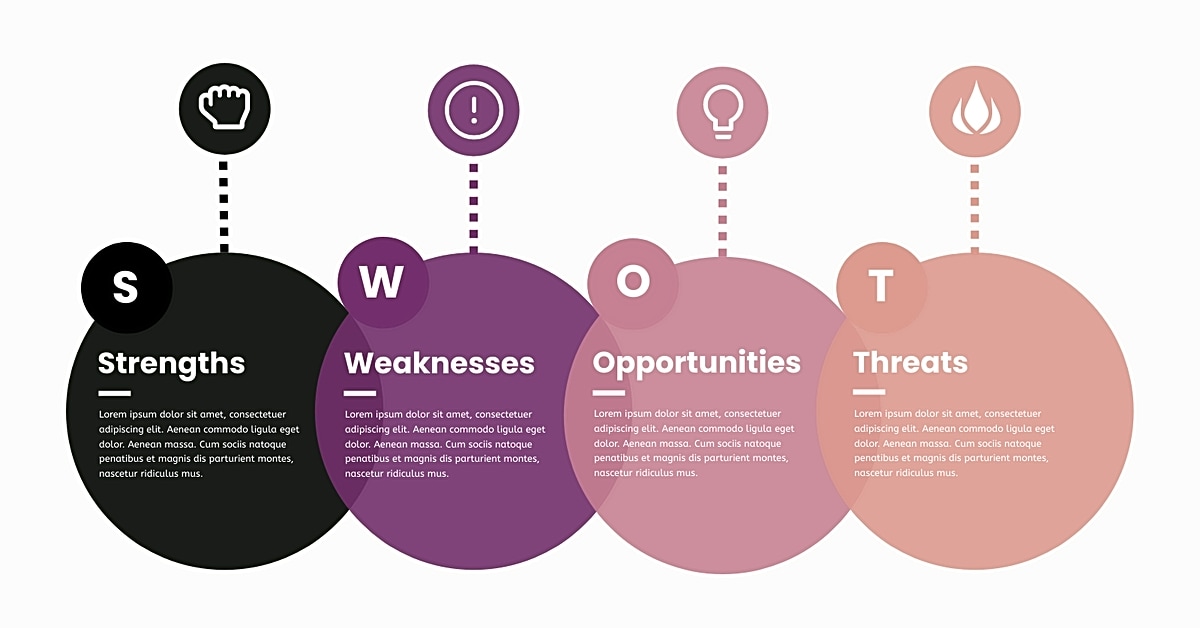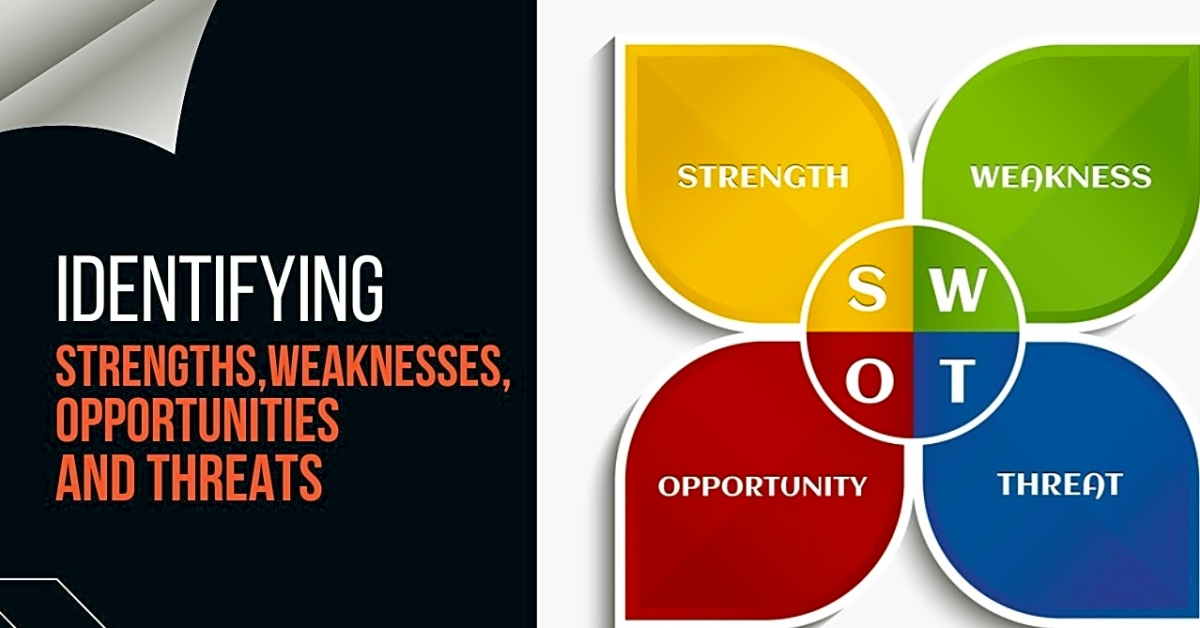Welcome to our step-by-step guide on how to identify external opportunities and threats for your SWOT analysis. Conducting a SWOT analysis is crucial for any business or organization as it helps identify strengths, weaknesses, opportunities, and threats. While the internal factors can be controlled to a certain extent, external factors such as market trends, competition, and economic conditions can greatly impact the success of a business. Therefore, it is essential to accurately identify these external factors in order to develop effective strategies for growth and sustainability.In this article, we will focus on the process of identifying external opportunities and threats in the context of a SWOT analysis. We will provide you with valuable insights and practical tips on how to effectively gather and analyze information to identify potential opportunities and threats that may affect your organization. By the end of this guide, you will have a clear understanding of how to perform a thorough analysis of external factors and use it to your advantage.So, whether you are a business owner, an entrepreneur, or a manager looking to improve your company’s performance, this article is for you. So let’s dive in and learn how to identify external opportunities and threats for your SWOT analysis.
In this article, we will discuss the vital step of identifying external opportunities and threats in the SWOT analysis process. Whether you are new to SWOT analysis or looking for ways to improve your current analysis, understanding this aspect is crucial for achieving success. By the end, you will have a better understanding of what external opportunities and threats are and how to identify them to make informed decisions for your business or personal development.
Firstly, let’s define what external opportunities and threats are in the context of SWOT analysis. External opportunities are factors outside of your control that could potentially benefit your business or personal development. These could include new market trends, technological advancements, or changes in consumer behavior. On the other hand, external threats are factors that could potentially harm your business or personal development. These could include competition, economic downturns, or changing regulations.
Now that we have a clear understanding of these concepts, let’s discuss why it is important to identify them in the SWOT analysis process. By identifying external opportunities, you can capitalize on them and gain a competitive advantage. Similarly, by identifying external threats, you can prepare for and mitigate any potential risks that may arise. This step is crucial for making informed decisions and staying ahead in today’s rapidly changing business landscape.
To further illustrate the importance of this step, let’s look at some real-life examples. For a business, identifying an external opportunity such as a new technology that can streamline operations can lead to increased efficiency and cost savings. On the other hand, not identifying an external threat such as a new competitor entering the market can result in losing market share and revenue.
So how do we go about identifying external opportunities and threats? The first step is to gather information from various sources such as industry reports, market research, and competitor analysis. This will help you understand the external factors that may affect your business or personal development. Next, you can use tools and frameworks such as PESTLE analysis, Porter’s Five Forces, and SWOT analysis to analyze this information effectively. These tools can help you identify potential opportunities and threats and assess their impact on your business or personal development.
It is also essential to keep in mind that external opportunities and threats can change over time. Therefore, it is crucial to regularly review and update your analysis to stay ahead of any changes in the external environment.
Now, let’s address any potential objections or questions that may arise regarding this step in the SWOT analysis process. Some may argue that it is not worth spending time and resources on identifying external opportunities and threats since they are outside of our control. However, as we have discussed, understanding these factors can help us make informed decisions and stay ahead in a constantly evolving business landscape. Additionally, by regularly reviewing and updating our analysis, we can adapt to any changes and minimize potential risks.
In conclusion, identifying external opportunities and threats is a vital step in the SWOT analysis process. It allows us to capitalize on potential opportunities and mitigate any potential risks, leading to better decision-making for our business or personal development. So make sure not to overlook this crucial aspect when conducting a SWOT analysis for your organization or personal growth.
The Importance of Identifying External Opportunities and Threats
In the SWOT analysis process, identifying external opportunities and threats is a crucial step that can greatly impact the success of your analysis. This step involves identifying potential opportunities and threats that may arise from outside factors, such as changes in the market, new competitors, or advancements in technology.
By understanding these external factors, you can better prepare for potential challenges and take advantage of potential opportunities. This information can also help you make informed decisions for your business or personal development.
Without identifying external opportunities and threats, your SWOT analysis may be incomplete and not accurately reflect the current state of your business or situation. This step allows you to gather valuable insights and make strategic plans to improve your overall performance.
Defining External Opportunities and Threats
When it comes to identifying external opportunities and threats, it is important to have a clear understanding of what you are looking for. This step in the SWOT analysis process involves assessing the external factors that may impact your business or personal development.
External opportunities refer to any potential advantages or favorable situations that can benefit your business. These can include market trends, changes in consumer behavior, advancements in technology, or new partnerships and collaborations.
On the other hand, external threats are any external factors that may pose a risk or challenge to your business. These can include economic downturns, changes in government policies, emerging competitors, or shifts in consumer preferences.
By defining external opportunities and threats, you will have a better understanding of the external environment that your business operates in. This will allow you to proactively anticipate potential opportunities and threats and make strategic decisions to capitalize on the former and mitigate the latter.
Addressing Objections and Questions
One common concern when it comes to identifying external opportunities and threats is the overwhelming amount of information that can be gathered. With so many external factors at play, it can be challenging to determine which ones are the most relevant and important for your specific situation.
Another concern is the fear of missing out on potential opportunities or ignoring potential threats. This can lead to bias in the analysis and ultimately, a less accurate and useful SWOT analysis.
To address these objections, it is important to have a clear understanding of your business or personal goals. This will help you filter through the vast amount of information and focus on the factors that align with your objectives.
Additionally, it is important to consider multiple perspectives and gather input from different sources. This will help you gain a more well-rounded understanding of the external environment and identify any potential blind spots.
Lastly, it is important to continuously revisit and update your SWOT analysis as the external environment is constantly changing. This will ensure that you are always aware of any new opportunities or threats that may arise.
Gathering Information and Analyzing It
Gathering information and analyzing it is a crucial step in the SWOT analysis process. This is where you gather data from various sources to identify external opportunities and threats that may affect your business or personal development.
One effective strategy for gathering information is conducting market research. This can include analyzing industry trends, studying your competitors, and understanding your target audience. By keeping track of the market and your competition, you can identify potential opportunities and threats that may arise.
Another strategy is to stay informed about current events and changes in the political, economic, social, and technological landscape. These external factors can greatly impact your business or personal goals, so it’s important to stay updated and adapt accordingly.
Once you have gathered all the necessary information, the next step is to analyze it. This involves looking for patterns, trends, and potential risks. You can also use tools like SWOT analysis templates or PESTLE analysis to help organize and analyze the data.
It’s important to note that identifying external opportunities and threats requires critical thinking and a thorough understanding of your business or personal goals. Don’t just rely on surface-level information; dig deeper and consider all possibilities.
Tools and Frameworks for Identifying External Opportunities and Threats
Identifying external opportunities and threats is a crucial step in the SWOT analysis process. However, it can also be a complex and time-consuming task. Luckily, there are several tools and frameworks available that can make this process easier.
PEST Analysis
PEST (Political, Economic, Social, Technological) analysis is a popular framework used for analyzing the external factors that can impact a business or organization. By examining the political, economic, social, and technological factors in the external environment, you can identify potential opportunities and threats that may arise.
Porter’s Five Forces
Porter’s Five Forces is another useful tool for identifying external opportunities and threats. This framework focuses on analyzing the competitive forces in an industry, including the threat of new entrants, bargaining power of suppliers and buyers, threat of substitutes, and rivalry among existing competitors. By understanding these forces, you can identify potential opportunities and threats for your business.
SWOT Analysis Templates
Using a pre-designed SWOT analysis template can also make the process of identifying external opportunities and threats easier. These templates often include prompts and guidelines for conducting an effective SWOT analysis, making it easier to identify external factors that may impact your business.
Identifying external opportunities and threats is a crucial step in the SWOT analysis process. It allows you to make well-informed decisions and plan for the future. By following the steps outlined in this article, you will be able to effectively identify these factors and use them to your advantage.


